Key Takeaways
- Strategic Evolution: Blog maturity extends beyond temporal existence, emphasizing strategic evolution in content quality, regular updates, and audience engagement for sustained SEO success.
- Dynamic Impact on SEO: Explore the intricate dynamics between blog maturity and SEO excellence, understanding how a mature blog influences search engine rankings, user experience, and content resonance.
- Tool-driven Mastery: Harness powerful SEO analytics tools to measure, refine, and fortify blog maturity. Realize the potential of tools like Google Analytics, Semrush, and social media monitoring platforms to navigate the digital landscape effectively.
In the dynamic realm of online content, where the digital landscape continually evolves, bloggers and content creators are engaged in a perpetual quest for strategies that elevate their standing in search engine rankings.
Amidst the familiar SEO pillars of keywords, backlinks, and content quality lies a nuanced and often overlooked factor – the concept of “Blog Maturity.”
This comprehensive exploration embarks on a journey to unveil the multifaceted dimensions of blog maturity and its profound impact on Search Engine Optimization (SEO).

Deciphering Blog Maturity: Beyond Chronology
Blog Maturity, far from being a mere reflection of chronological existence, represents a holistic evaluation of a blog’s evolution.
This intricate measure takes into account pivotal elements such as content quality, the regularity of updates, and the depth of audience engagement.
As the digital landscape becomes increasingly saturated with content, understanding and harnessing the power of blog maturity emerges as a critical differentiator in the pursuit of SEO excellence.
The Symbiotic Dance: Blog Maturity and SEO Harmony
Why does Blog Maturity matter for SEO, and how can it be strategically harnessed to propel digital presence to new heights?
These questions lay at the heart of our exploration.
Whether you’re a seasoned blogger refining your approach or a novice seeking to establish a robust online footprint, the symbiotic dance between blog maturity and SEO promises insights that can reshape your digital strategy.
Peeling Back the Layers: Components of Blog Maturity
As we navigate this intricate landscape, it becomes imperative to peel back the layers of blog maturity.
From the fundamental components such as content quality and consistency in updates to the intricacies of audience engagement, understanding the nuances of blog maturity lays the foundation for effective SEO strategies.
This segment of our exploration aims to equip you with a nuanced understanding of what comprises blog maturity and its role in the overarching SEO narrative.
Strategic Imperative: The Impact of Blog Maturity on SEO Dynamics
In an era where search engines are increasingly sophisticated in gauging user intent and content relevance, the role of blog maturity extends beyond a mere metric – it becomes a strategic imperative.
This segment of our exploration delves into the tangible impact of blog maturity on search engine algorithms, user experience, and overarching SEO dynamics.
By deciphering these intricacies, we aim to empower you to fortify your blog’s maturity for unprecedented visibility and resonance in the expansive online world.
But, before we venture further, we like to share who we are and what we do.
About AppLabx
From developing a solid marketing plan to creating compelling content, optimizing for search engines, leveraging social media, and utilizing paid advertising, AppLabx offers a comprehensive suite of digital marketing services designed to drive growth and profitability for your business.
AppLabx is well known for helping companies and startups use blogging strategies to drive web traffic to their websites and web apps.
At AppLabx, we understand that no two businesses are alike. That’s why we take a personalized approach to every project, working closely with our clients to understand their unique needs and goals, and developing customized strategies to help them achieve success.
If you need a digital consultation, then send in an inquiry here.
What is Blog Maturity and Does It Matter for SEO?
- Understanding Blog Maturity
- The Impact of Blog Maturity on SEO
- Strategies to Enhance Blog Maturity
- Tools and Resources for Assessing Blog Maturity
1. Understanding Blog Maturity
In the digital landscape, blog maturity goes beyond mere existence; it encompasses a dynamic blend of factors that shape a blog’s evolution.
To comprehend the essence of blog maturity, we explore its key components and the metrics that serve as barometers for its growth.

Content Quality: The Cornerstone of Blog Maturity
Quality content stands as the bedrock of a mature blog.
Search engines prioritize valuable and relevant content, making it essential for bloggers to go beyond keyword stuffing and focus on creating content that addresses user intent.
Example: Consider Neil Patel’s blog, renowned for its in-depth and insightful content. By consistently providing high-quality information, Patel’s blog has become a go-to resource in the digital marketing sphere, attracting both a substantial audience and valuable backlinks.
Regularity of Updates: The Pulse of Blog Maturity
Consistency in delivering fresh content is a key indicator of a blog’s maturity.
Search engines favour regularly updated websites, recognizing them as more relevant and authoritative.
Example: The Moz blog, renowned in the SEO community, maintains a consistent posting schedule. This practice not only keeps their audience engaged but also contributes to their blog’s maturity by aligning with search engine preferences for frequently updated content.
Audience Engagement: Beyond Numbers
Engaging with the audience is a crucial aspect of blog maturity.
Metrics such as comments, social media shares, and time spent on the page signal a thriving community.
Example: The Buffer blog is an excellent illustration of audience engagement. Through active interaction on social media, responding to comments, and conducting polls, Buffer not only fosters a sense of community but also enhances the overall maturity of their blog.
Metrics to Measure Blog Maturity: Beyond the Surface Numbers
Understanding blog maturity requires quantitative assessments. By examining specific metrics, bloggers can gauge the effectiveness of their strategies and identify areas for improvement.
Traffic Growth: A Tangible Indicator
Monitoring traffic growth provides tangible insights into a blog’s maturity.
Tools like Google Analytics offer a comprehensive overview of website traffic, helping bloggers understand which content resonates most with their audience. A consistent increase in organic traffic is a positive signal of a blog’s maturity.
According to a study by Ahrefs, 96.55% of pages get no organic traffic. This underscores the importance of active strategies to enhance a blog’s visibility and maturity.
Social Media Presence: Amplifying Reach
A robust social media presence is indicative of a mature blog. Social signals, such as shares and mentions, contribute to a blog’s authority.
In 2022, over 4.59 billion people were using social media worldwide, emphasizing the vast potential for blogs to amplify their reach through effective social media engagement.
Backlink Profile: Building Authority
Backlinks from reputable sources serve as a testament to a blog’s authority. Tools like Semrush and Moz can be employed to assess a blog’s backlink profile, identifying areas for improvement and showcasing the blog’s maturity.
Pages with lots of backlinks rank above pages that don’t have as many backlinks. This emphasizes the significance of building a strong backlink profile to enhance a blog’s maturity and SEO performance.
2. The Impact of Blog Maturity on SEO

Search Engine Crawlers and Blog Maturity
The relationship between blog maturity and search engine crawlers is pivotal in determining a blog’s visibility on search engine results pages (SERPs). As search algorithms evolve, mature blogs tend to garner favour from crawlers for several reasons.
- Content Freshness: Search engines prioritize fresh and updated content.
- Crawl Frequency: Mature blogs, characterized by consistent updates and quality content, often experience more frequent crawls by search engine bots. This increased crawl frequency contributes to faster indexing and higher visibility.
- Example: The blog of renowned tech company, Apple, exemplifies the impact of crawl frequency. With regular updates and a wealth of information, Apple’s blog secures rapid indexing and high visibility on search engines, contributing to its overall SEO prowess.
User Experience and Blog Maturity
User experience is a pivotal factor in search engine rankings. A mature blog, characterized by engaging content and an intuitive design, contributes positively to the overall user experience.
- Dwell Time: The amount of time users spend on a page, known as dwell time, is a crucial metric for search engines. Mature blogs often have longer dwell times as users find valuable and comprehensive information, signalling to search engines that the content is relevant.
- Bounce Rate: Blogs with low bounce rates, indicative of users navigating through multiple pages, are favoured by search engines. Quality content, a hallmark of blog maturity, encourages users to explore further.
- Example: The blog of online retailer Zappos is a testament to the impact of user experience on SEO. With engaging content, easy navigation, and a visually appealing layout, Zappos’ blog not only retains visitors but also positively influences its search engine rankings.

Importance of Fresh and Relevant Content
The significance of consistently producing fresh and relevant content cannot be overstated in the realm of SEO. Blog maturity directly impacts a blog’s ability to meet the ever-changing demands of search engine algorithms.
- Algorithm Updates: Search engines continually update their algorithms to deliver more accurate and relevant results. A mature blog, adept at staying current with industry trends and user needs, is better positioned to adapt to these algorithmic changes.
- Competitive Edge: Longer content seems to rank better in search results. Mature blogs, accustomed to producing comprehensive and in-depth content, gain a competitive edge in search engine rankings.
- Example: The blog of digital marketing expert Moz exemplifies the importance of fresh content.
Through regular updates and timely insights into industry changes, Moz’s blog consistently ranks high on search engine results, maintaining a competitive edge in the SEO landscape.
3. Strategies to Enhance Blog Maturity

Content Optimization Techniques
Quality content forms the backbone of a mature blog. Employing effective content optimization techniques ensures that your blog resonates with both readers and search engines.
- Keyword Research and Integration: Conduct thorough keyword research using tools like Semrush or Ahrefs to identify high-impact keywords in your niche. Integrate these keywords organically into your content for improved search engine visibility.
- Updating and Refreshing Existing Content: Regularly revisit and update your existing content to keep it relevant and valuable. Google tends to favour fresh content, and updating existing posts signals your commitment to providing accurate information.
- Example: The practice of updating content is exemplified by the HubSpot blog. They consistently refresh and republish their top-performing articles to ensure ongoing relevance and visibility.
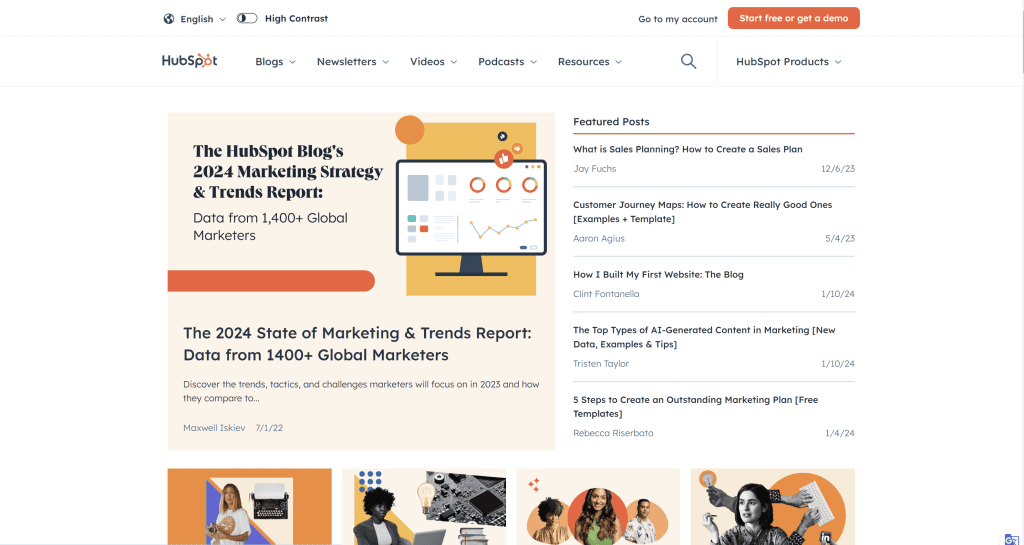
- Diversifying Content Types: Incorporate various content formats such as videos, infographics, and podcasts to cater to diverse audience preferences. Different content types enhance user engagement and contribute to a well-rounded blog.
Building a Strong Backlink Profile
A robust backlink profile not only enhances a blog’s authority but also contributes significantly to its maturity and SEO performance.
- Quality over Quantity: Prioritize acquiring high-quality backlinks from reputable sources within your industry. A few authoritative backlinks can have a more substantial impact than numerous low-quality links.
- Natural Link-Building Strategies: Foster organic link-building through valuable content creation, networking, and partnerships. High-quality, natural backlinks are perceived more favourably by search engines.
- Example: The success of Backlinko, founded by Brian Dean, is attributed to a strong backlink profile built through the creation of comprehensive, shareable content and effective outreach strategies.
Engaging with the Audience
Active engagement with your audience not only enhances the user experience but also contributes significantly to blog maturity.
- Social Media Interaction: Leverage social media platforms to actively engage with your audience. Respond to comments, participate in discussions, and share your content to amplify its reach.
- Responding to Comments and Feedback: Encourage and respond to comments on your blog posts. User-generated content fosters a sense of community and signals to search engines that your content is valued and relevant.
- Example: The Buffer blog is a prime example of effective social media interaction and response to comments. By actively participating in conversations, Buffer has cultivated a dedicated community around its content.
4. Tools and Resources for Assessing Blog Maturity
Evaluating blog maturity requires a combination of insightful metrics and reliable tools to gauge the effectiveness of your strategies.
In this section, we delve into the diverse array of tools and resources available for bloggers to assess and enhance their blog maturity, accompanied by relevant examples and data-driven insights.

SEO Analytics Platforms
Utilizing robust SEO analytics platforms is paramount for a comprehensive understanding of your blog’s performance and maturity.
- Google Analytics: A cornerstone tool, Google Analytics provides an extensive range of metrics, including traffic sources, user behavior, and engagement metrics. Regularly analyzing these data points offers valuable insights into your blog’s overall performance.
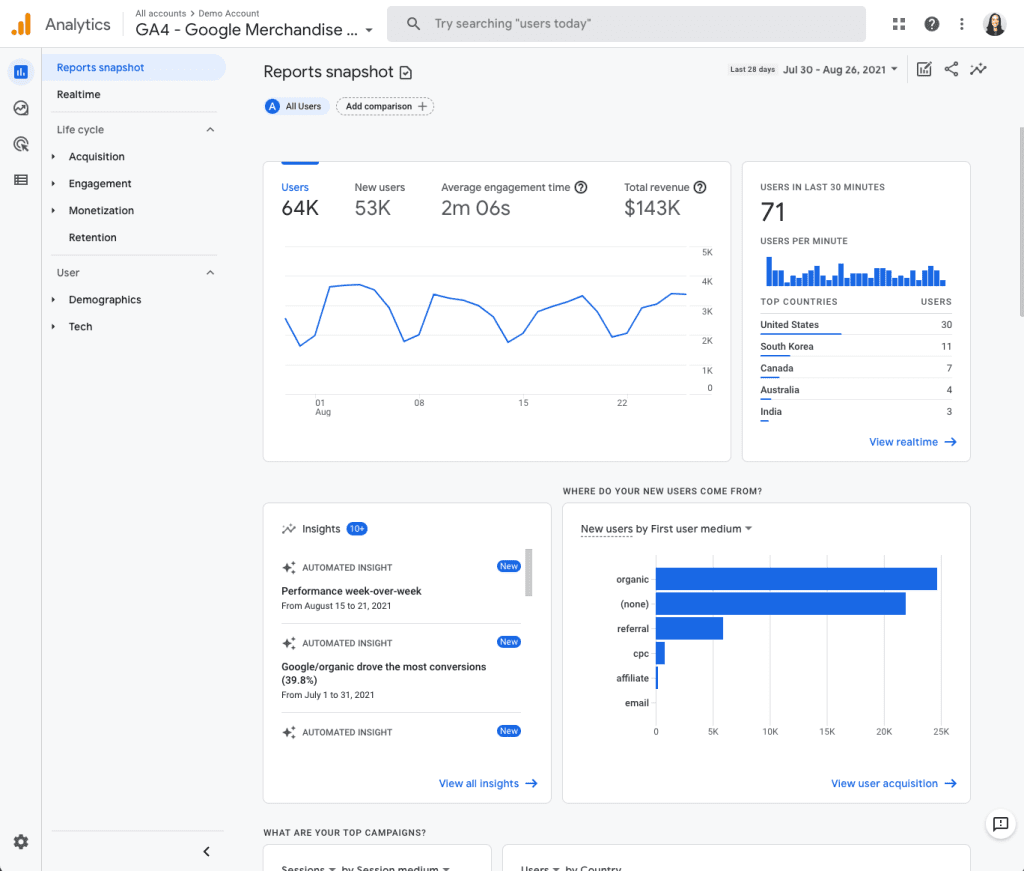
- Semrush: Offering a holistic approach to SEO analysis, Semrush enables bloggers to assess organic search performance, track keyword rankings, and spy on competitors.
The platform’s Site Audit tool provides a detailed overview of technical SEO issues that may impact blog maturity.

- Moz Pro: Moz Pro’s suite of tools, including Site Crawl and Link Explorer, provides in-depth insights into a blog’s backlink profile, technical SEO, and domain authority. These metrics are crucial for understanding the blog’s overall maturity.
Social Media Monitoring Tools
Given the integral role of social media in audience engagement, employing dedicated tools for social media monitoring is essential.
- Hootsuite: This tool allows bloggers to schedule posts, monitor social media mentions, and analyze engagement metrics across various platforms. Understanding social media performance contributes to assessing the blog’s reach and resonance.
- Sprout Social: Offering social listening capabilities, Sprout Social helps bloggers track brand mentions and audience sentiments. This tool aids in understanding how the blog is perceived and discussed across social media channels.
Backlink Analysis Tools
Assessing the quality and quantity of backlinks is crucial for understanding a blog’s authority and maturity.
- Ahrefs: Renowned for its backlink analysis capabilities, Ahrefs provides insights into a blog’s backlink profile, including new and lost backlinks. This information is vital for strategizing link-building efforts.
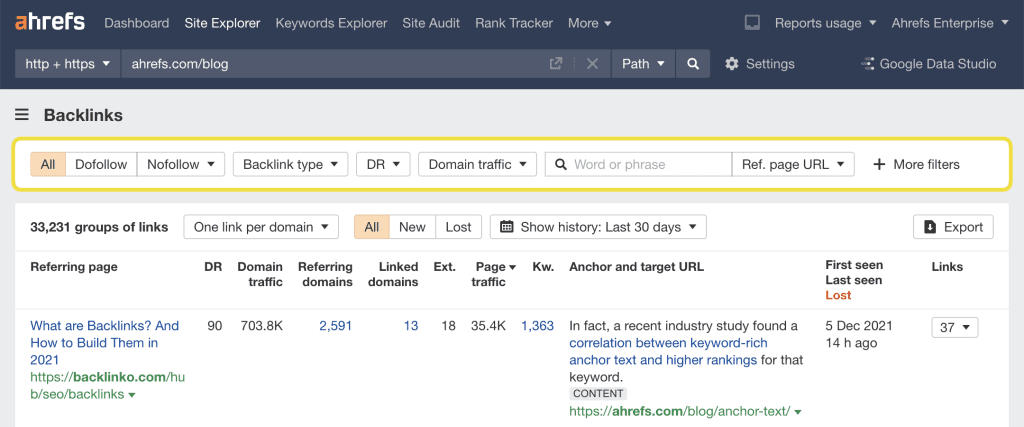
- Majestic SEO: With a focus on link intelligence, Majestic SEO offers a comprehensive backlink analysis toolset. Bloggers can utilize features like the Trust Flow and Citation Flow metrics to assess the credibility of their backlink profile.
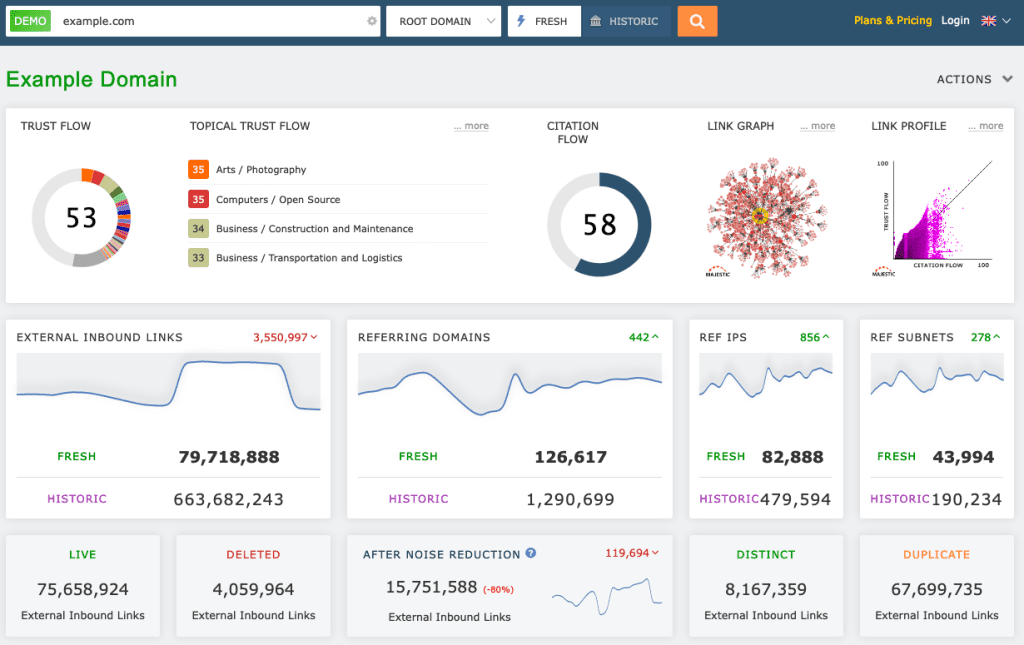
- Example: The BBC, a global media giant, employs Majestic SEO to monitor and analyze its vast backlink network, ensuring a robust online presence.
Content Performance Metrics Tools
Understanding how well your content performs is essential for optimizing blog maturity.
- BuzzSumo: BuzzSumo enables bloggers to identify top-performing content in their niche. By analyzing content that resonates with the audience, bloggers can refine their content strategy for enhanced maturity.
- ContentKing: This tool provides real-time SEO auditing, highlighting content changes and their impact on search engine performance. It aids in identifying areas for improvement and optimizing content for better maturity.
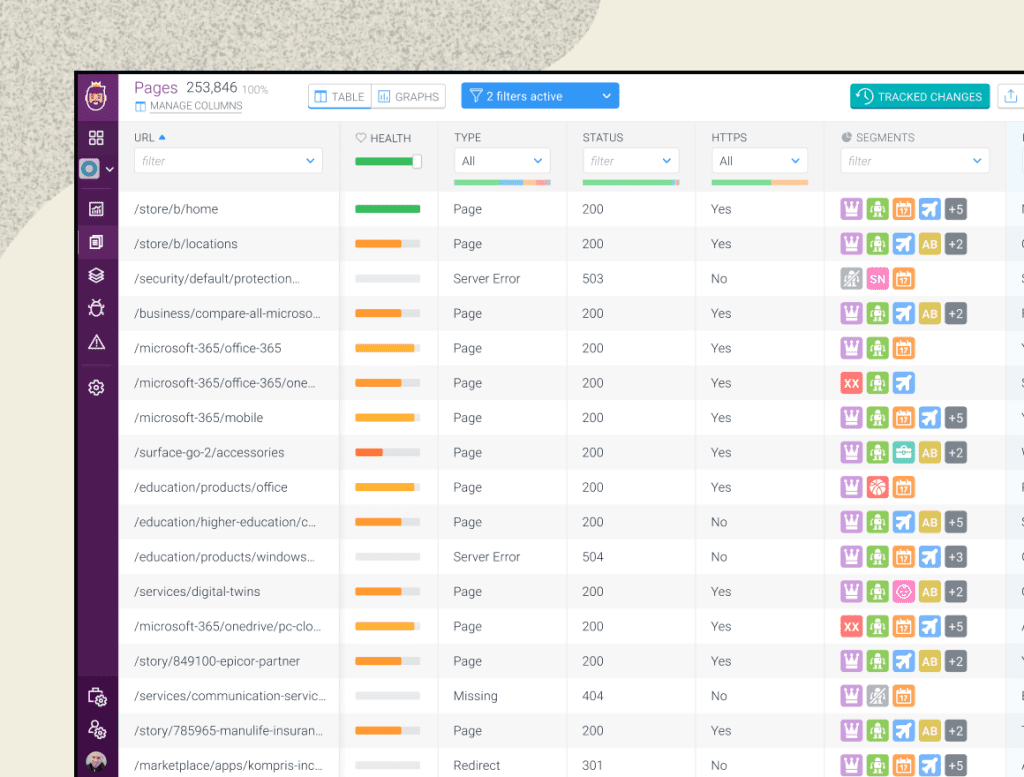
- Example: Forbes, a prominent media company, leverages ContentKing to monitor and enhance its vast content library, ensuring optimal search engine visibility.
Conclusion
In the ever-evolving sphere of digital presence, the concept of Blog Maturity emerges not merely as a chronological measure of a blog’s existence but as a dynamic force shaping the contours of SEO success.
As we traverse the depths of this exploration, we uncover the symbiotic relationship between Blog Maturity and SEO, revealing a nuanced narrative that holds the key to sustained online visibility and resonance.
Unlocking the Essence of Blog Maturity
Blog Maturity, far from being a static metric, embodies a multifaceted evolution encompassing content quality, regularity of updates, and audience engagement.
It is a journey marked by deliberate cultivation rather than a destination determined by time alone. Recognizing the core components of Blog Maturity sets the stage for a strategic approach that transcends the conventional realms of SEO.
Deciphering the Dynamics
Understanding Blog Maturity is not a solitary pursuit but a collaborative dance with search engine crawlers, user experience, and the ever-shifting algorithms that govern digital visibility.
As we unravel the impact of Blog Maturity on SEO, we unveil the intricate interplay that dictates a blog’s prominence on search engine results pages and the user’s journey through online content.
Strategies for Excellence
Armed with the insights gained from understanding Blog Maturity, bloggers embark on a journey of strategic refinement.
From content optimization techniques that breathe life into the blog’s substance to the meticulous cultivation of a robust backlink profile, every strategy becomes a brushstroke in the masterpiece of SEO success.
Tools as Beacons of Insight
In the arsenal of a modern blogger, tools, and resources stand as beacons illuminating the path toward enhanced Blog Maturity.
From the comprehensive analytics of Google and Semrush to the social media prowess of Hootsuite and Sprout Social, bloggers wield these instruments to measure, refine, and fortify their digital presence.
These tools become the compass guiding bloggers through the labyrinth of metrics and insights, ensuring a well-informed and data-driven approach.
Blog Maturity is not a mere metric; it’s a strategic imperative.
As bloggers, marketers, and content creators, understanding its nuances positions us not just as participants but as architects shaping the digital landscape. It underscores the importance of quality, relevance, and engagement in a world inundated with content noise.
So, does Blog Maturity matter for SEO? Undoubtedly.
It’s the linchpin that bridges creativity with strategy, user intent with content delivery, and time with impact.
As we navigate this symbiotic landscape, let Blog Maturity be the compass guiding us towards SEO excellence, ensuring that our digital footprint doesn’t merely exist but resonates, evolves, and stands the test of time.
If you are looking for a top-class digital marketer, then book a free consultation slot here.
If you find this article useful, why not share it with your friends and business partners, and also leave a nice comment below?
We, at the AppLabx Research Team, strive to bring the latest and most meaningful data, guides, and statistics to your doorstep.
To get access to top-quality guides, click over to the AppLabx Blog.
People also ask
Do blogs matter for SEO?
Yes, blogs significantly impact SEO. They offer fresh, relevant content, attracting search engine crawlers. Regular updates signal site activity, boosting indexing. Quality blog content enhances user experience, lowers bounce rates, and builds a strong backlink profile, all crucial for higher search rankings.
What is SEO maturity?
SEO maturity refers to the advanced stage of a website’s optimization. It involves strategic content creation, robust backlink profiles, technical SEO excellence, and continual adaptation to algorithm changes. A mature SEO approach maximizes visibility, rankings, and user engagement.
How long should blogs be for SEO?
Ideal blog length for SEO varies but aiming for 1,000-2,000 words is common. Longer content often ranks higher, providing in-depth information and satisfying user intent. Focus on quality, relevance, and engagement to boost SEO performance, regardless of exact word count.
































